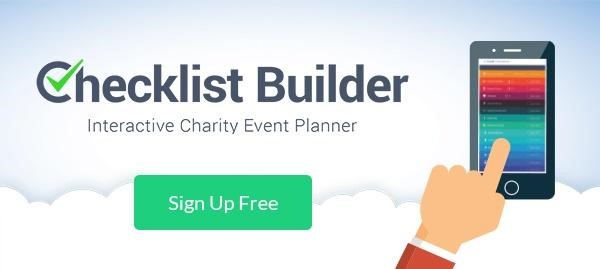This entry is from our Expert Guest series where funding professionals share their best tips on fundraising tactics.
Raising money for a good cause online this year? Here is how to use digital tools, great content, and social media to help you take your fundraising game to the next level. Here’s to reaching those fundraising targets in 2017!
Set out your fundraising aims
Whether you’re an individual with a target to meet, or you are in charge of raising funds for a project – setting out clear goals and targets is step one of online fundraising.
- Targets make donating more fun – online trackers and progress reports mean people can get involved in the project and see the amount climb higher and higher. Goals create momentum and drive, and will keep your campaign from stalling.
- Select a fundraising goal that is realistic and specific – use something actionable and measurable as your target (building a new school, putting someone through college etc.). A target that’s too ambiguous or vague will struggle to attract committed donors.
- Know when to push hard for the best results – most of online giving is concentrated around the year end. Factor in seasonality when mapping out fundraising targets.
 Have a content strategy
Have a content strategy
In order to encourage people to donate and give generously – make sure you create content that gives them a reason to.
What kind of language should you use? It’s best to be clear, concise, and use emotive (but direct) language.
- Blogging? Create a series of articles that explain why your cause is so important, and how people can get involved and help. Rather than focus on big picture stuff and the figures, zoom in on individual people and stories to have a more emotive impact.
- On social? Mix up the content formats in order to connect with as many people as possible. Design suitable social graphics for maximum engagement and attention.
- Emails? Learn how to grab people’s attention with your subject lines – that’s all you get sometimes.
- Have an editorial calendar mapped out so that you can jump in on relevant seasonal events, awareness days, and hashtags. Great content comes from great planning.
Go down the crowdfunding route
What could be better than getting a whole online community behind your cause (and donating)?
Crowdfunding sites and platforms are the perfect way to raise money, and it’s a super easy way to encourage other people to get involved. The sites do all the hard work – you just have to make sure that your cause tells a compelling story.
- Crowdfunding isn’t just for Silicon Valley startups – it’s the perfect nonprofit fundraising strategy. Focus on creating a really compelling value proposition and grabbing people’s attention.
- Relationships matter – make sure you engage with donors and investors with personalized messages. Remember to thank donors after the dust has settled – share how the money made a difference.
Get everyone involved
Social media is an amazing online tool that allows you to create a virtual community around your cause. It’s also one of the best ways to harvest user-generated content for your nonprofit (who could forget all those priceless ice bucket videos)?
Use your social media channels as a place to engage with people, and share your progress with followers on a regular basis. Make social an integral part of your fundraising campaign.
- Social is all about sharing, but don’t just settle for awareness (though that’s great too); be clear on the fact that you need actual funds to get this thing off the ground. Liking and sharing is easy – now you’ve got to make not donating hard.
- Thank donors publicly on social media – it’s a great way to identify potential advocates.
Differentiate
A great way to create a buzz around your cause is to do something a bit different.
- Whether you have a funny tale to tell, or a shock tactic video – getting people’s attention is half the online battle. Don’t expect (or count on) something that you do to go ‘viral’. Yes, some campaigns gain traction that way, but virality is hard to manufacture. Just focus on creating something shareable instead.
- Videos and animations can really help you up your engagement levels, so don’t rule out video. Putting a video together isn’t as expensive as it used to be, and you can easily upload a campaign on a video sharing site like YouTube. YouTube for Nonprofits helps nonprofits collect donations straight from YouTube.
- Urgency in the form of flash fundraising can encourage people to donate there and then. You might be better off investing in more frequent, shorter online campaign, rather than one that runs on and on.
- Whatever method you go for, always have a clear call to action that connects with your cause. Keep it simple and direct.
Retail therapy
Give people options when they shop online – make donating to you more fun.
- Shopping and giving to charity all in one go is the best kind of retail therapy. Ecommerce is a growing nonprofit income strategy – it’s easy to get set up with platforms like Shopify, and you can pretty much sell what you want (think branded tshirts, phone cases, greetings cards, chocolates, hampers etc.)
- AmazonSmile is a great ecommerce fundraising option – Amazon donates a percentage of sales to people’s chosen charity. Get yours signed up today.
- Online auctions are another great way to make fundraising more fun for donors – think of it as the logical evolution of the yard sale.
- Make donations into meaningful gifts. Offer a generous thank you pack to encourage people to gift their donation.
Make it easy
Online fundraising is all about making things easier for nonprofits, fundraisers, and donors.
- Collecting donations? Make sure users have a clear path to follow. Give them multiple ways to get involved (various amounts etc.), and don’t put people off with over complicated forms. Offer simple payment options and don’t ask for too much commitment too soon – it’s a conversion killer.
- As well as making things easy, you need to build trust with online donors. They might never see you in person, so focus on building up their confidence. Always put your best foot forwards with great copy, messaging, and visuals. Don’t be sloppy – nonprofits should be just as brand proud as other companies. Include payment trust signals on your online payment portals. Reassure people about where their money is going.
Target advocates
In order for the word to spread online, you will need some high-profile advocates to share your content or fundraising page.
- These advocates don’t have to be anyone new – it could be that a regular patron or trustee can lend their online brand to the cause. If you do need to find new cause advocates – start with bloggers who are likely to have a vested interest in your mission. Explain to them what you’re trying to achieve (and how they can help).
- Look for people who have a sizeable online audience themselves. Anyone who donates or engages with the campaign – get talking to them – they might be your next advocate.
- Donation matching is a great fundraising tactic that leverages another organization’s or individual’s public profile.
Embrace the digital world to help you fundraise better, but don’t forget the core ethics of accountability, transparency, and relationships. Online, your campaigns have the potential of reaching millions and changing lives, but don’t be disheartened if your achievements seem modest in comparison. It’s important to remain focused on what you do and keep doing it well – don’t always contrast and compare. What online resources have helped you fundraise?
Looking for a great tool for online fundraising? Plumfund offers free online crowdfunding opportunities.
Bio: Kayleigh Alexandra, Content Marketer & Startup Specialist
Passionate about writing for the startup and entrepren eurial audience, I have recently been part of setting up an exciting project at MicroStartups.org. We donate all our website profits to charities that help people reach their full potential. Find out more on Twitter.







